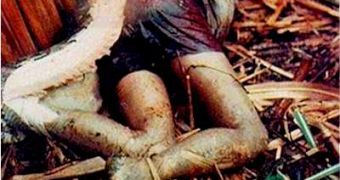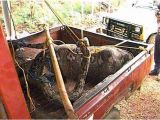In many primitive tribes, people binge themselves during periods of plenty, accumulating a round belly, and after that pass the time fasting during the season of scarcity.
Many big carnivores can binge after a big kill.
Lions and tigers can engulf up to 40 kg of meat at once (which represent up to 15 % of their weight, imagine you eating 10 kg of food in one meal!) and after that they can fast up to two weeks...
But reptiles can resist more to fasting as their metabolism is much slower than that of the mammals.
And in the reptile word, we could say that the large pythons would suffer of the most severe eating disorders.
They eat so infrequently that they must take full advantage of their prey, including the bones.
"Juvenile pythons normally eat every week, while adults can have a meal every month and can even stop feeding for several months under certain circumstances," said study co-author Jean-Herv? Lignot of Louis Pasteur University in France.
A month if it's a rabbit, 'cause in the nature, a bigger prey (let's say a small antelope or deer) can ensure them a fasting period of many months, up to a year.
Bones are rich in proteins and minerals, not to mention the fat rich marrow, but they are extremely hard to digest.
A new research investigated how a snake can digest its meal's skeleton, turning it into a more nutrition-packed snack.
"They are therefore physiologically fine tuned to cope with prolonged fasting, re-feeding on large meals, and intense digestion and nutrient absorption," Lignot said.
Lignot and Robert Pope of Indiana University South Bend investigated shape and temperature shifts of the guts of Burmese pythons before and after they ingested a meal.
Immediately after feeding, the multiplication and death of cells in the snakes' gut tissues increased significantly as new cells replaced the worn-out ones.
This is like a remodeling of the stomach and intestine to make the individual ready for the next fasting and feeding cycles.
Investigating the gut contents within hours after the snakes' feeding detected small particles that had come from the prey's skeleton.
This team found for the first time a new cell type that breaks down bony bits from the prey for digestion.
The golf tee shaped cells are specialized on degrading the particles before releasing the bones' nutritional chemicals into the bloodstream.
So, this seems to be the way snakes deal with the bones inside their prey.

 14 DAY TRIAL //
14 DAY TRIAL // 
